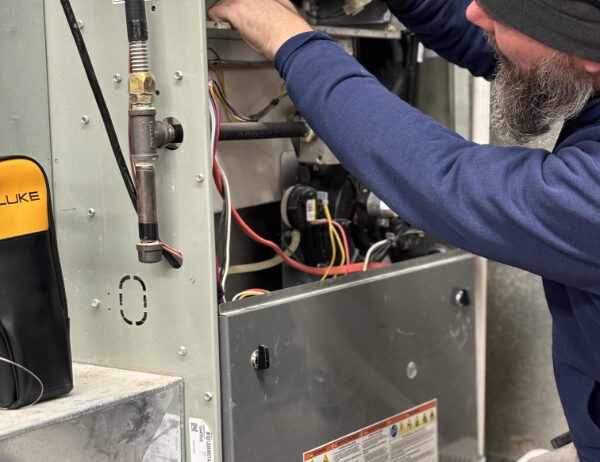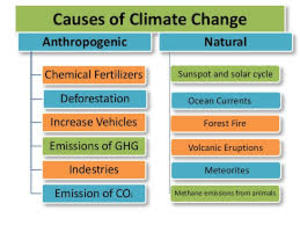Heating, cooling, and climate control are often perceived as mere comforts of modern living. However, beneath this conventional perspective lies a convoluted landscape of ecological implications, technological innovations, and societal necessities that fundamentally shape our planet’s health and future. Understanding the seamless interplay between these systems offers not only insights into their importance but also highlights the pressing need for sustainable practices in an era rife with climatic upheaval.
At its core, heating and cooling systems are designed to regulate indoor environments, creating sanctuaries of comfort amidst the often-harsh realities of external weather conditions. This need for temperature regulation finds its roots in humanity’s long-standing desire for comfort and well-being. Historically, from the earliest use of fire to the advent of modern HVAC systems, we have consistently sought ways to manipulate our surroundings to improve livability. However, while these advancements have undeniably enhanced our quality of life, they have also contributed significantly to greenhouse gas emissions and energy consumption. Statistically, the U.S. residential and commercial sectors account for over 40% of total energy consumption, a clear indication that our pursuit of comfort has reverberating consequences on our environment.
The significance of heating and cooling extends far beyond mere temperature adjustments. These systems play a critical role in public health, particularly during extreme weather conditions. In a warming world, the frequency and intensity of heatwaves are on the rise. Vulnerable populations, such as the elderly and those with pre-existing health conditions, are especially susceptible to heat-related illnesses. Thus, effective heating and cooling systems become not just a question of comfort but one of survival. Conversely, during frigid winters, inadequate heating can lead to life-threatening situations. In addressing these humanitarian challenges, climate control systems emerge as essential tools in safeguarding public health.
The intricacies of climate control transcend physical comfort and implicate economic considerations as well. HVAC systems account for a considerable portion of household energy expenditure. These expenses can act as a barometer for economic stability as families grapple with democratic access to affordable energy. The pursuit of highly efficient heating and cooling technologies becomes paramount. Technologies such as geothermal heat pumps and variable refrigerant flow (VRF) systems epitomize innovation and sustainability, offering scalable solutions that minimize energy use while maximizing comfort. Yet, despite the availability of these advancements, many consumers remain blissfully unaware of their potential, often opting for less efficient systems that may seem cost-effective in the short term but are detrimental in the long run.
An indispensable aspect of modern heating and cooling systems is the environmental paradigm shift they represent. Traditional fossil fuel-based heating systems have long dominated the landscape, contributing to a plethora of issues, from air pollution to climate change. As societal awareness regarding these challenges heightens, the urgent necessity for renewable energy solutions has sparked transformative momentum in the HVAC industry. Solar thermal systems and biomass heating options have begun to emerge as eco-friendly alternatives, championing reduced carbon footprints while still delivering comfort. This evolution showcases a broader public consciousness that realizes the intertwined fates of humanity and the environment—where consumer choices can drive collective change.
Furthermore, the advancement of smart technology has revolutionized climate control systems. The integration of the Internet of Things (IoT) into HVAC products allows for unprecedented levels of control and efficiency. Smart thermostats enable users to tailor their heating and cooling preferences based on occupancy patterns, thereby maximizing efficiency and minimizing waste. These innovations simultaneously reflect a cultural shift towards personal agency in combatting climate change while enhancing convenience. In this context, the fascination with heating and cooling systems elevates beyond their functional capabilities into the realm of ethical choices and environmental stewardship.
However, with great power comes great responsibility. The proliferation of heating and cooling systems also necessitates discussions surrounding proper disposal and recycling of these technologies. As older units become obsolete, their environmental impact continues through e-waste accumulation. There exists a pressing need for manufacturers and consumers alike to prioritize sustainable end-of-life solutions. Practices such as reclaiming refrigerants and recycling components must become ingrained in our environmental ethos.
The collective challenge of combating climate change places even greater emphasis on the relationship between heating/cooling and policy frameworks. Government regulations often incentivize energy efficiency through tax breaks and rebates for consumers who invest in ecological technologies. Moreover, stringent building codes mandate energy efficiency standards that compel builders and owners to adopt sustainable practices. Local, state, and federal initiatives work synergistically to mitigate contributing factors to climate change, illustrating that effective climate control does not exist in isolation but is part of a broader governmental and societal effort.
Education remains a powerful tool in this discourse. As individuals become more attuned to their heating and cooling choices, they are empowered to take action—whether that means retrofitting existing homes with efficient systems or advocating for regulatory reforms that reduce our carbon footprints. The dialogue surrounding heating, cooling, and climate control thus serves as a microcosm of the wider climate conversation, where increased awareness and actionable steps converge toward sustainable living.
In conclusion, the fascination with heating, cooling, and climate control embodies a deeper understanding of our responsibilities toward our environment and ourselves. As we navigate the duality of seeking comfort while promoting sustainability, it is essential to recognize that each choice we make has profound implications. Embracing innovation, advocating for policies, and fostering an educational environment will enable both individuals and communities to contribute to a more sustainable future. Reflecting on our relationship with heating and cooling reframes our perspective—inviting us not only to appreciate the systems but to actively engage in protecting our planet for generations to come.








